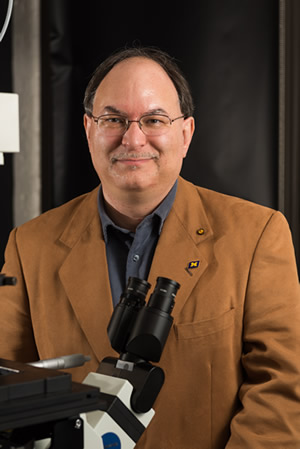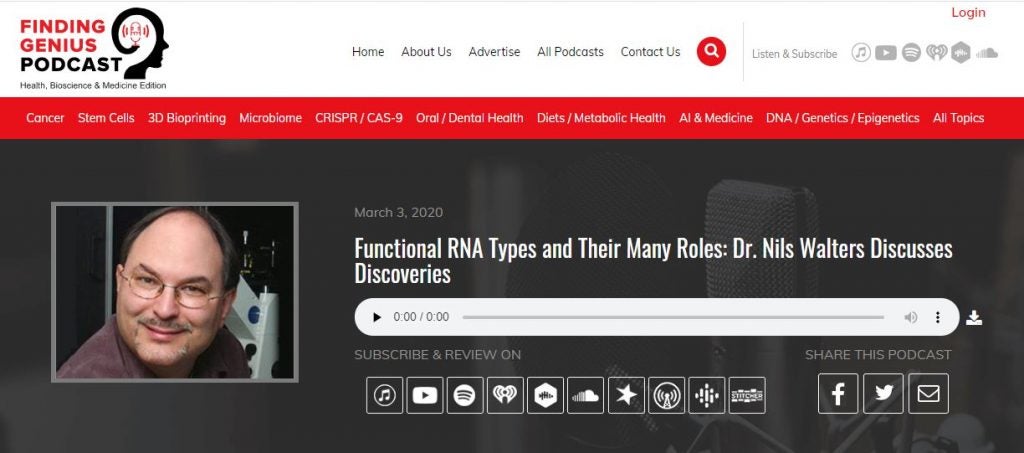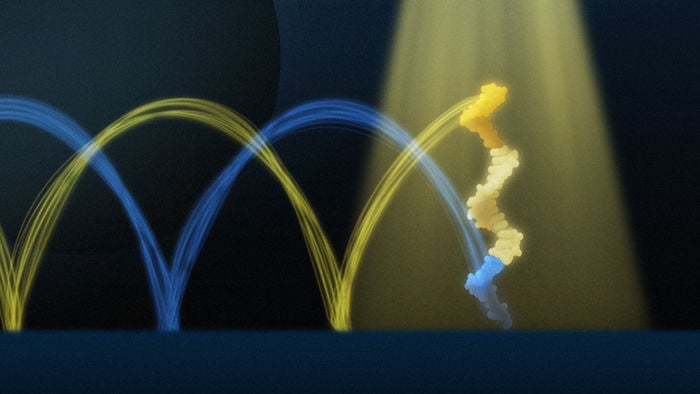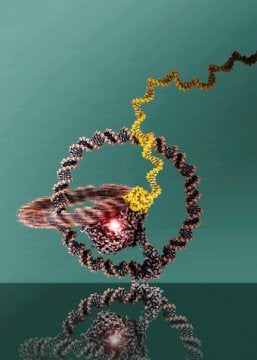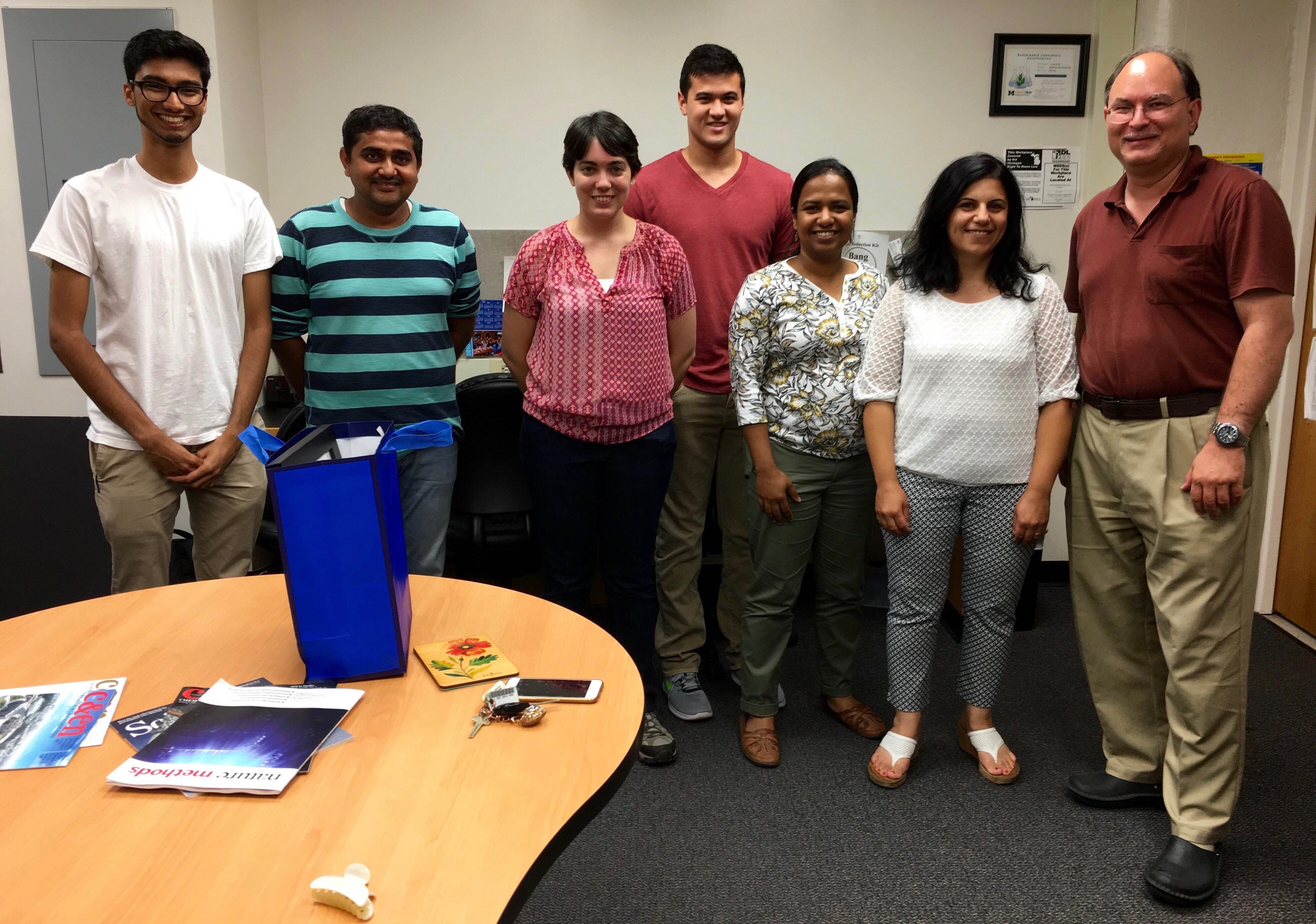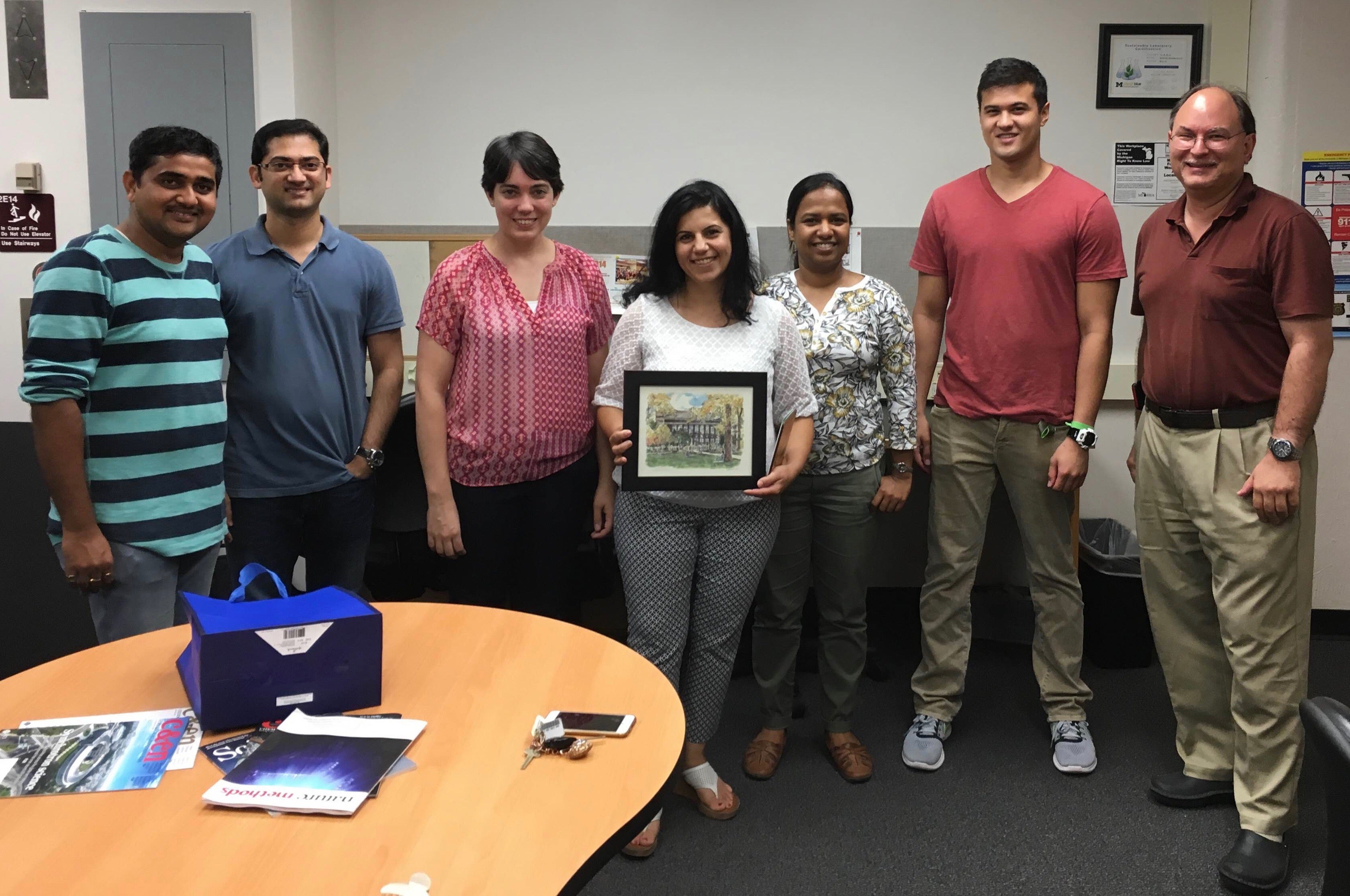Bacteria need to constantly adapt to compete against other species for nutrient sources and to survive against threats such as antibiotics and toxins.
In an effort to understand how bacteria control and regulate this adaptation, University of Michigan researchers are examining how RNA polymerase—the enzyme that transcribes genetic information from DNA onto RNA—slows during transcription in a process called transcriptional pausing.
They found that a protein called N-utilizing substance A, or NusA, in concert with another control element called a riboswitch, fine-tunes the transcription speed in order to regulate gene expression. Gene expression is the process by which genetic information is converted into the building blocks of the bacterium.
The researchers say their work, published in the Proceedings of the National Academy of Sciences, expands our general understanding of the transcription process in bacteria, and could provide a target for developing new antibiotics.
“NusA is specific to bacteria. It’s not found in human cells or in yeast, so that it can be a target for the design of new antibiotics or drugs that will affect pathogenic bacteria but not our own cells,” said Adrien Chauvier, lead author of the study and postdoctoral researcher in the Nils Walter laboratory in the U-M Department of Chemistry and the Center for RNA Biomedicine.
When bacteria undergo gene expression, RNA polymerase synthesizes RNA. As RNA is produced, it undergoes a process called co-transcriptional RNA folding, adopting a dynamic structure that researchers think influences the timing of gene expression. To examine this process, Chauvier, together with undergraduate researcher Pujan Ajmera, looked at an element called a riboswitch, a segment of the transcribed messenger RNA that regulates gene expression through modulation of the RNA conformation. This structural change is triggered when a specific metabolite or ion called a “ligand” binds to the riboswitch.
Chauvier and Ajmera examined a type of riboswitch that binds a fluoride ion and controls the expression of a cellular exporter that removes this toxin from the bacterium. Previously, researchers thought that riboswitches bind to ligands without the influence of proteins, Chauvier said.
“We had the strong idea that riboswitches are also interacting with the entire machinery of the cell, and have the potential to modulate the activity of adjacent proteins to fine-tune gene expression,” he said. “And this is what we found.”
Chauvier, Ajmera and co-authors focused on NusA from the common bacterial species Escherichia coli, because the protein is involved in the three main stages of RNA transcription: initiation, elongation and termination.
In order to study its role during the transient elongation process, the researchers needed to isolate a transcription complex at a specific position during RNA synthesis. Chauvier developed a method to stop the polymerase during transcription to study the RNA emerging from the RNA polymerase. The researchers then tagged the RNA with a fluorescent marker, allowing individual complexes to be visible under a specialized “single molecule” microscope, and tagged NusA itself.
Additionally, in order to examine the RNA structure, Chauvier and Ajmera used a small DNA probe that transiently binds to the RNA. Using all of these approaches together, the researchers were able to directly watch the frequent, repeated binding of NusA to the transcription complex in real time and correlate the protein’s dynamic behavior to the RNA’s structure. From this, the team discovered that, once the riboswitch binds its fluoride ion ligand, the restructured RNA pauses the RNA polymerase but also suppresses NusA from binding to the enzyme. This speeds up subsequent transcription to more likely express the exporter that detoxifies the bacterium.
“So instead of having a lot of NusA binding events, when the ligand is bound to the riboswitch, we observe less protein binding events, and that turns out to be another way to regulate gene expression,” Chauvier said.
Walter is the senior author of the paper, founding co-director of the Center for RNA Biomedicine, and professor of chemistry, biophysics and biological chemistry.
“There is a tug-of-war between, on the one hand, the fluoride ion binding and folding the riboswitch to then reject NusA protein from the transcription complex and, on the other hand, NusA binding to the complex to suppress fluoride ion binding to the RNA,” Walter said. “Such a dynamic, counteracting modulation of gene expression will allow the bacterium to adapt more nimbly to fluctuating toxin levels. It may also present an expanded angle for developing antibiotics that keep a pathogenic bacterium from detoxing.”
More information:
Read full article >>



